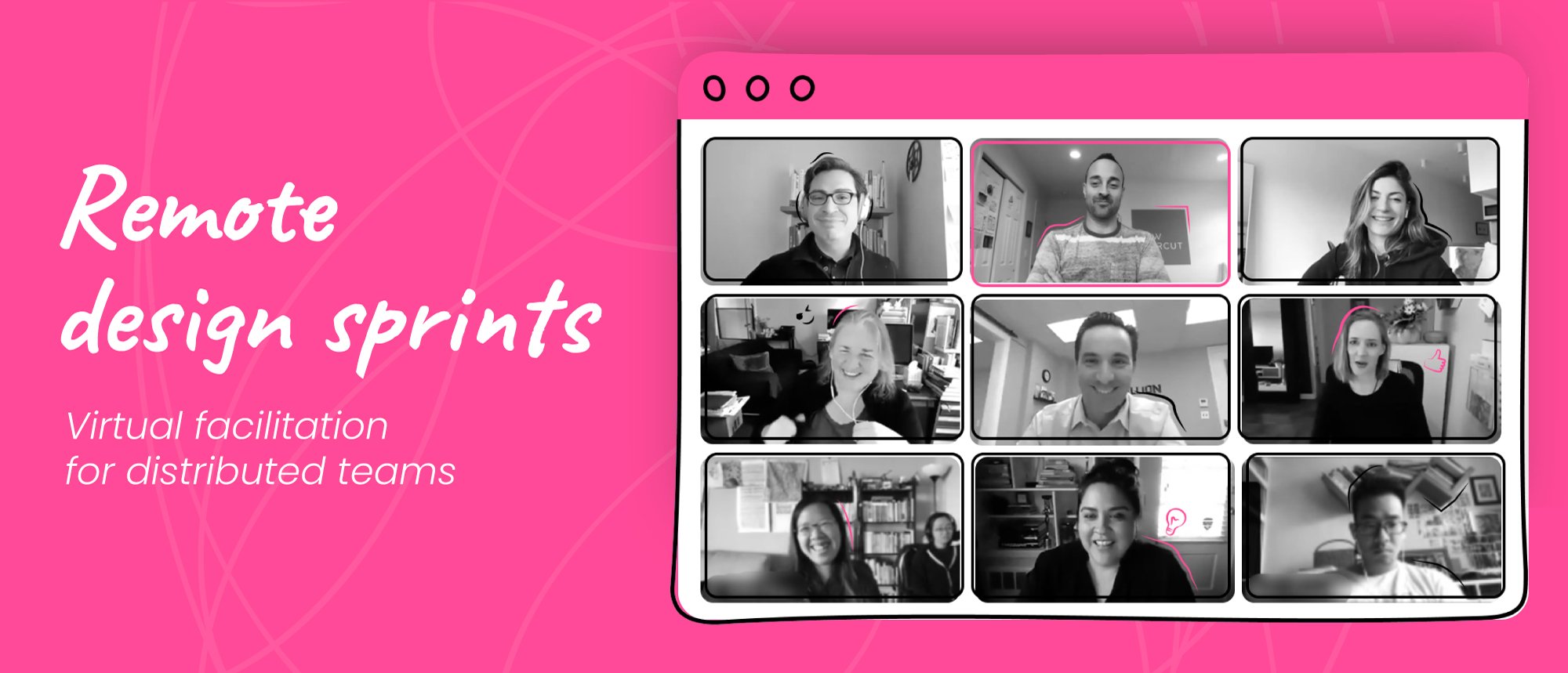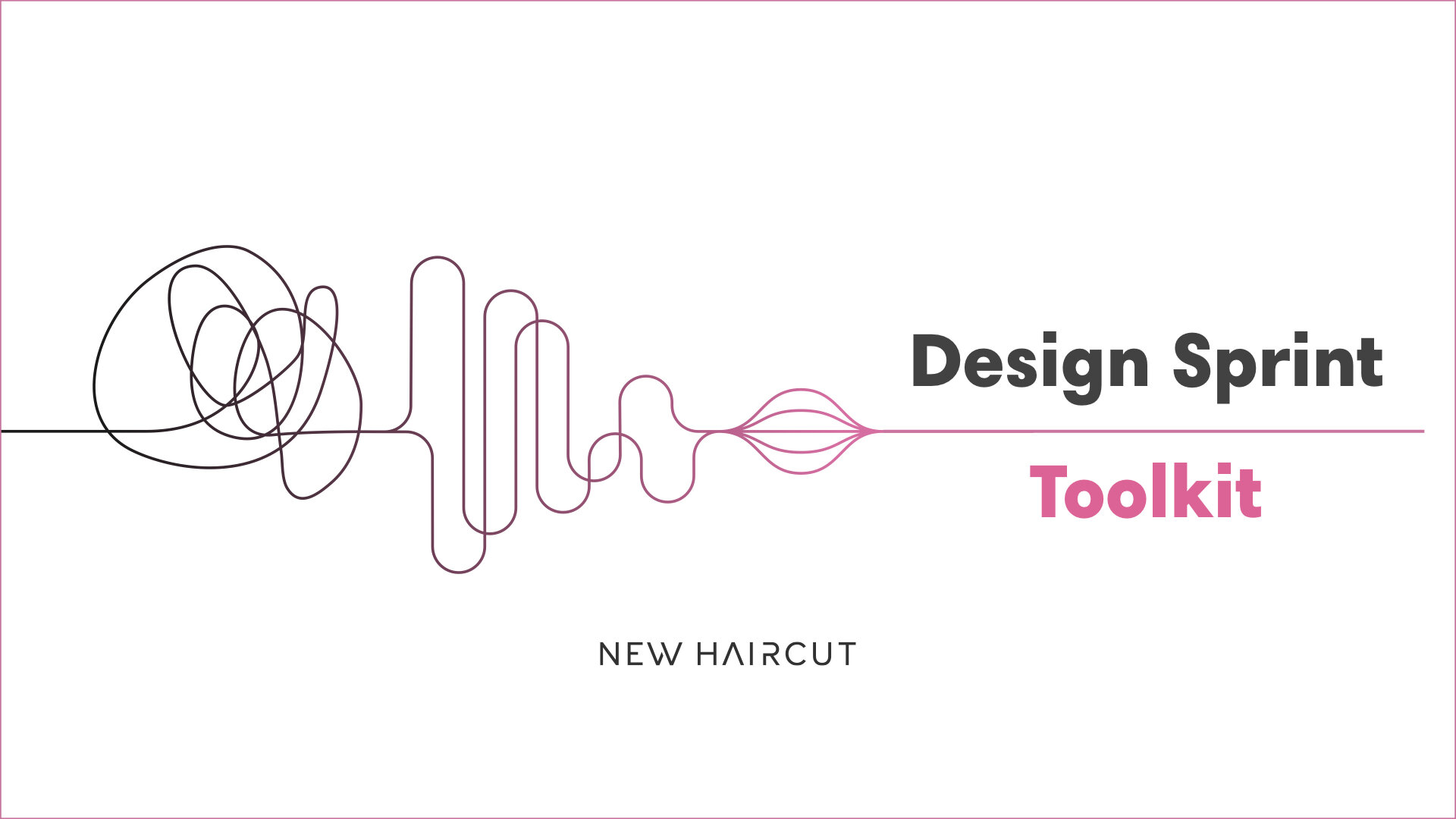Facilitating remote design sprints
Stories, tools, and resources for facilitators and innovation teams hoping to begin running remote design sprints. Plus, a new option to review with your team.
The future of work
A couple weeks ago I was invited by the MURAL team to talk about facilitating digital-first innovation programs. The event was held at EY’s Wavespace in Chelsea (NYC) — a space that is certainly pushing the upper limits of modern tech.
We were joined by approximately 30 in-person — and many more virtual — attendees and expert facilitators. The topic of remote facilitation is important to them and a growing number of companies that have witnessed their workforces become increasingly distributed.

Jim Kalbach, Head of CX at Mural, asked the crowd, “How many of you work exclusively with in-person team members?” Not a single hand in the room went up. “Exactly!” he added.
As of July 2018, 4.3 million employees (3.2% of the workforce) work from home at least half the time — a 140% increase since 2005. And that’s a fraction of the global workforce that work in distributed companies, with employees spread across headquarters, satellite offices, and home offices.
The future of work is here. And just under 2 years ago, I was like most others.. content with how things had always been — organize schedules, book travel, run workshops, go home, repeat as needed.
But one day, I was forced to operate under a new set of constraints…
A distributed Rosetta Stone team
February, 2018
As I was finalizing plans for an upcoming Innovation Sprint for our new client, Rosetta Stone, one of their stakeholders asked how logistics would go. I walked her through my typical setup — initial 2-day workshop on-site, several days of remote research, then return for a 3-day design sprint (depiction below).

She pushed back, “Oh, that would mean a couple of our team members who work from remote satellite offices would need to travel twice. That’s not going to work so well. What else can we do?”
I replied, “No problem. Let me get back to you.”
Almost immediately, I remembered our MURAL account. I had met Jim Kalbach at Google’s Sprint Conference 4 months earlier. He graciously offered me a free account to test drive the product.
I spent the rest of the day migrating our in-person problem framing workshop to be ready for a distributed Rosetta Stone team. The next morning, I emailed the stakeholder and explained that we would shift things around to run the first sessions remotely.
Leading up to the session, I rumbled with doubts:
Will the team take the workshop seriously? Will they engage?
Am I qualified to run this session virtually?
Will there be a learning curve with the tools?
Will there be breaks in momentum / concentration due to connectivity issues?
Will things take much longer than if we were in-person?
Will this work?
I allotted 6 hours for our sessions. We finished in 4, with more ideas and more equally distributed engagement than I’d experienced in almost any previous in-person session I’d led. If the client team was impressed, I was floored.
What else is possible with remote facilitation?
Rosetta Stone was a major aha moment for me. For years, based on all of my former experiences of outsourcing and offshoring, I had grown firm in the belief that the moment you’re not sitting elbow-to-elbow with team members, collaboration, engagement, and efficiency plummet. And then there’s innovation themed workshops… rooms filled with people, energy, and colorful post-its (or as my friend Daniel Stillman calls it, clown vomit)!
It’s not possible to reformat that kind of ecosystem within digital whiteboards and Zoom calls, right?! Two years ago, I would be hard pressed to believe any answer other than hell no.
After Rosetta, things began to snowball. A growing array of opportunities to run more, different remote sessions, and over longer durations. After some time, we started teaching other teams how to organize their remote design sprints and other design thinking workshops. Eventually, we took the leap and started running our entire Product Sprint Program remotely & virtually — not always, but when it made sense.
What follows is a curated list of top resources I’ve come across and best practices I’ve developed while learning how to facilitate remote workshops. If you have a tip you’d like included, message me. I’ll add it and cite you.
Remote design sprint facilitation: Best practices
Read MURAL’s remote facilitation eBook. If you feel like I skimped out on this list it’s because it’s already covered in the eBook, or within their blog posts.
Use Mural to organize and run your sessions - get up and running immediately with the Mural templates included in our toolkits
Use Zoom to host your web calls. It feels like their tools were designed to support distributed / remote teams running design thinking style sessions.
There is a remote / digital equivalent for many in-person activities. Start by replicating your in-person stuff to run online and be open to variations based on team reactions, energy, and engagement.
Don’t go from all in-person to completely remote / digital overnight. Start by running an in-person session that’s digital-first. Next, try 1 or 2 activities with everyone truly remote. Expand to a 1/2 day remote session, then 1 full-day. Run the single full-day session a few times before upgrading to multi-day remote sessions.
Don’t run your first sprint remotely. There are too many team dynamics and meta process adoption happening to layer in the remote aspect simultaneously.
Don’t be dogmatic about remote. If there’s a chance (and budget) to run 1 per year in-person, go for it. Worst case, find a way to gather the team for a meal / drink. For now, people are still highly relational and need the human contact.
With some cycles, become aware of the types of sessions, formats, team dynamics, and activities that generate more engagement when remote. For example, groups accustomed to working in toxic / bureaucratic environments may share more / better ideas when remote than in-person.
When planning your sprint, consider this 4-day format:

Remote design sprint facilitation: New Haircut + MURAL
After lots of learning, tinkering, and training others, I’m excited to officially announce our Remote Design Sprint Facilitation services.
And what I’m most excited about is New Haircut and Mural have agreed to join forces on this new venture.
Our remote design sprints will come bundled with some exclusive MURAL benefits. Below is a short summary of what’s included today.

In the background, the MURAL team and I are discussing additional packages that will be rolled out soon!
If you’d like my support to educate, organize, and facilitate your remote design sprints, and take advantage of the added perks of our MURAL partnership, message me on LinkedIn or learn more here.
Rather run your own sprints?
Since 2015, New Haircut has been recognized as a global leader in design sprints. Now, we’re looking to help others achieve the same success with their sprints with our Design Sprint Toolkit.
The toolkit includes all of our digital templates, presentation slides, pro tips, and dozens of sprint upgrades. Included are versions that support remote (virtual) or in-person sprints.
This toolkit is 100% comprehensive and ready-to-use, today.



